Menu

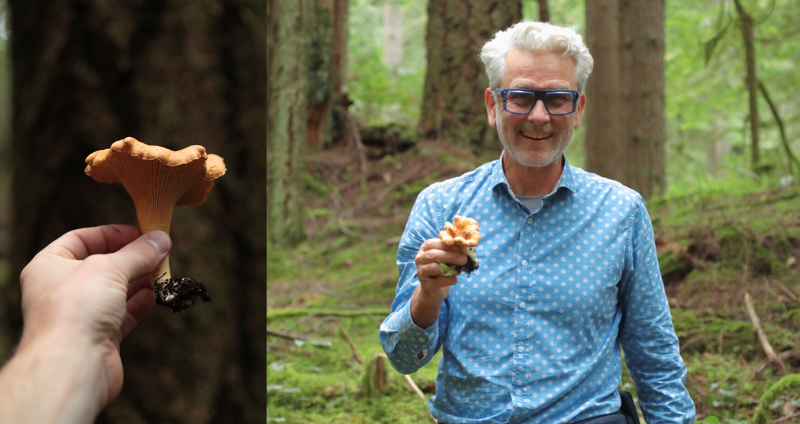
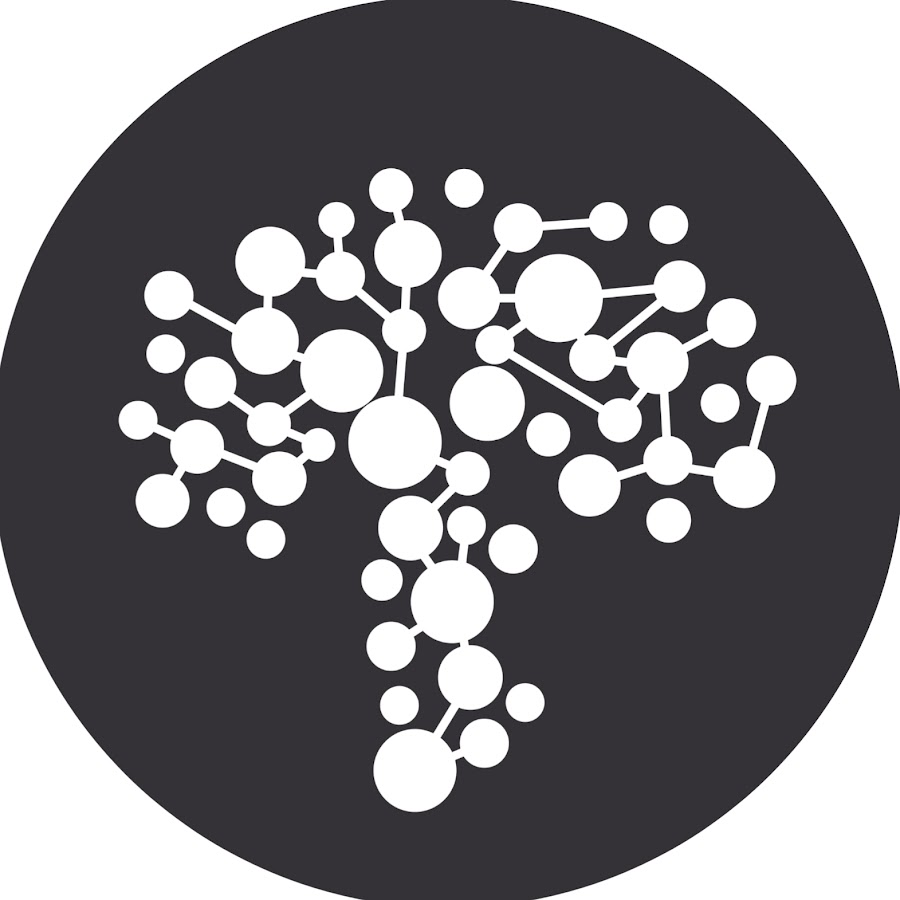
Whether you're a seasoned forager or a curious foodie, this guide will take you on a journey through the diverse and delectable types of mushrooms you can find, cook, and enjoy. Numerous types of edible mushrooms are known for their rich flavor, making them great meat substitute options for various dishes.
From the woodsy flavor of morels to the nutty flavor of porcinis, each edible mushroom offers a unique taste and texture that can elevate your culinary creations. Beyond their delicate flavors, many types of edible mushrooms provide unique health benefits.
Let's dive into the fascinating realm of fungi and uncover the secrets to identifying, harvesting, and savoring these natural delights.
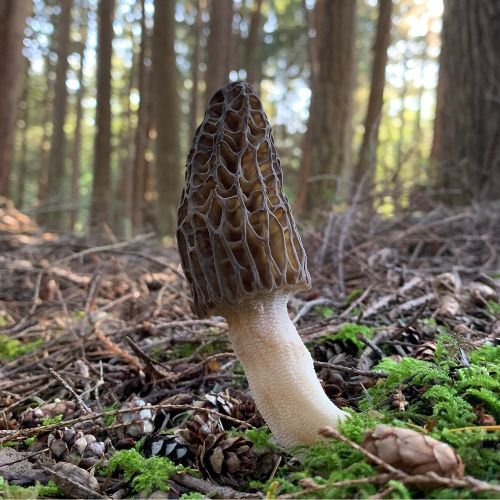
Morels are among the most prized wild mushrooms, known for their honeycomb-like appearance and rich, earthy flavor. They are typically found in wooded areas during the spring. Their meaty flavor and texture hold up well in various cooking methods, making them perfect for sautéing, frying, or adding to soups and stews.
To identify morels, look for a conical cap with a honeycomb pattern. The cap is attached directly to the stem, and morels are hollow from the tip of the cap to the bottom of the stem.
Morels can be sautéed in butter with garlic and herbs, added to creamy sauces for pasta or risotto, or stuffed and baked for a gourmet appetizer.
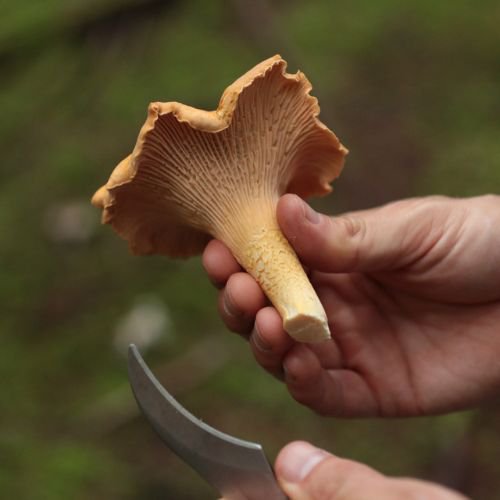
Chanterelles are easily recognizable by their bright yellow to orange color and trumpet-like shape. They emit a fruity aroma, often described as apricot-like. Chanterelles are commonly found in mossy forests during the summer and fall. They have a delicate, peppery flavor and a slightly chewy texture.
To identify chanterelles, look for a funnel-shaped cap with wavy edges. The gills run down the stem, which is solid and not hollow. These types of edible mushrooms often grow in clusters on the forest floor.
Chanterelles can be sautéed with shallots and white wine, incorporated into egg dishes like omelets and quiches, and used in creamy soups and sauces.
Cooking Safety: Why shouldn’t mushrooms be eaten raw? Two reasons:
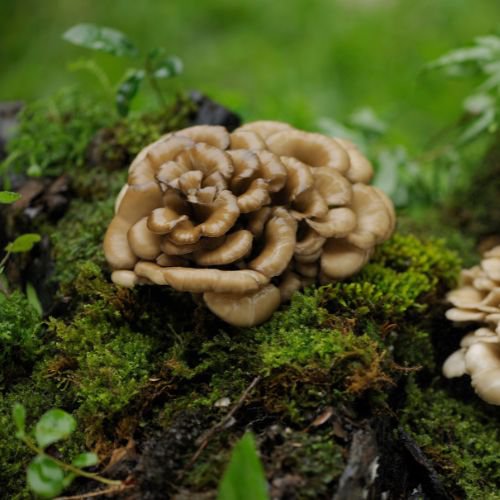
Also known as "hen of the woods," maitake mushrooms grow in large, clustered masses at the base of trees, particularly oaks. They have a feathery appearance and a robust, earthy flavor. Maitake mushrooms are typically found in the fall.
To identify maitake mushrooms, look for a large, clustered mass of fronds that resemble a hen's feathers. The fronds are grayish-brown with white undersides. They grow at the base of hardwood trees, especially oaks.
Maitake mushrooms can be roasted or grilled with olive oil and herbs, used in stir-fries and hot pots, and added to grain dishes like barley or farro for a hearty meal.
Maitake Benefits: Besides their culinary use, maitake can be taken in supplement form to help balance blood sugar and blood pressure, and support the immune system. [1]

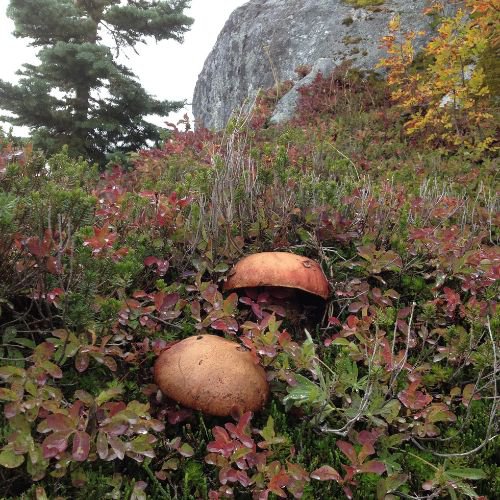
Porcini mushrooms, known as king boletes, are highly valued for their nutty flavor and firm texture. These edible mushrooms are typically found under conifer and hardwood trees in late summer and fall. Porcinis can be large, with a thick stem and a broad, brown cap.
To identify porcinis, look for a large, brown cap that is slightly sticky when fresh. The underside of the cap has a spongy layer of pores instead of gills. The stem is thick and bulbous, often with a network of fine veins.
In culinary uses, porcinis can be sliced and grilled as a side dish or main course. Porcinis are added to risotto and pasta dishes for a rich, umami flavor.
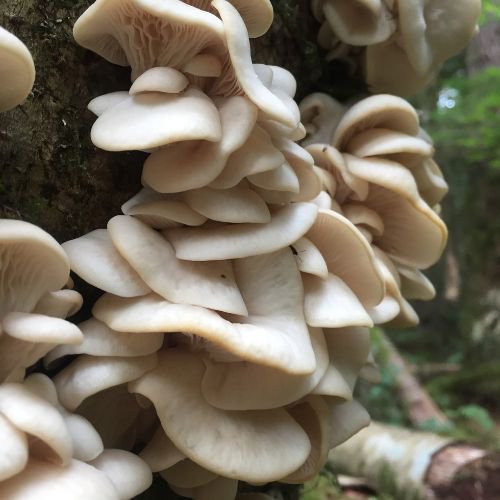
Oyster mushrooms are named for their oyster-shaped caps and are found growing on decaying wood, particularly in deciduous forests. They come in various colors, including white, gray, and yellow. Oyster mushrooms have a mild, slightly sweet flavor and a tender texture.
These mushrooms can come in various colors, such as pink, grey, and golden. Oyster mushrooms have a fan-shaped cap that is smooth and slightly wavy. The gills run down the short stem. They often grow in layered clusters on logs and tree stumps.
Oyster mushrooms can be stir-fried with vegetables and soy sauce. Due to their meaty texture, they can also be used as a meat substitute in vegetarian dishes and added to soups and broths for extra depth of flavor.
Oyster Mushrooms Benefits: These fungi contain high levels of an amino acid that few other foods do, called ergothioneine. This newly discovered super-antioxidant helps enhance cellular health, brain health, and overall longevity.

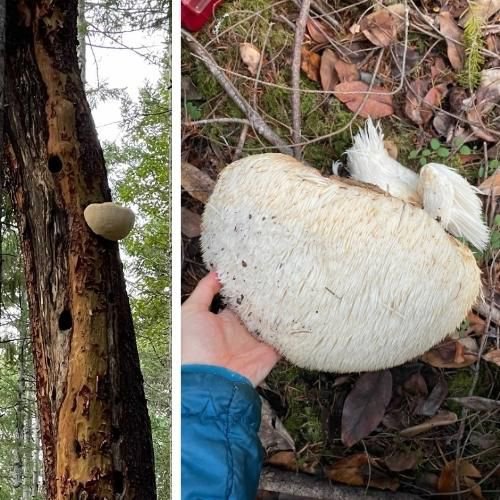
Lion's mane mushrooms are known for their unique, shaggy appearance, resembling a white waterfall of cascading spines. They have a delicate, seafood-like flavor and a tender, slightly chewy texture. Lion's mane mushrooms are typically found on hardwood trees in late summer and fall.
To identify lion's mane mushrooms, look for a mass of long, white spines that hang downward. These spines are a type of mushroom anatomy called “teeth”. The spines are soft and can grow quite long. They grow on dead or dying hardwood trees, often high up on the trunk.
The culinary uses of lion's mane mushrooms include sautéed in butter with garlic and herbs, much as you would with seafood. They can be used as a meat substitute in vegetarian dishes. Lion's mane mushrooms are also excellent when added to soups and stir-fries for a unique flavor.
Lion’s Mane Benefits: These edible mushrooms also have various health benefits. They’re reported to promote healthy brain and gut health while also supporting immune health [2]. They are the most popular mushroom supplement used in North America.

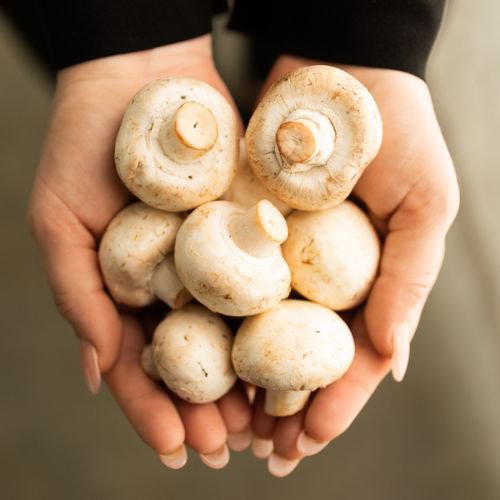
White button mushrooms are the most common and widely consumed edible mushrooms, known for their smooth, white caps and mild flavor. They are cultivated year-round and are a staple in many kitchens.
These mushrooms have smooth, white caps and have gills that are pinkish-brown and turn darker as they mature. The mushrooms have short, thick stems.
White button mushrooms have a strong, savory taste. They can be sliced and added to salads, sautéed, and used as a topping for pizzas, burgers, and steak. These edible mushrooms are also cooked in soups, stews, and stir-fries.
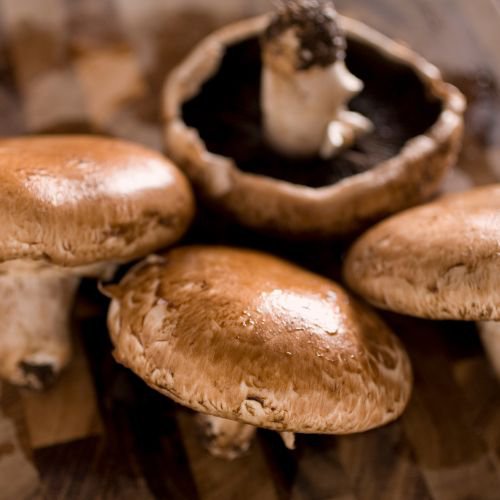
Portobello mushrooms are the mature form of white button mushrooms. These edible mushrooms are known for their large, flat caps and meaty texture. They have a rich, earthy flavor and are often used as a meat substitute.
These mushrooms have large, dark brown caps that are flat and open. The gills underneath are dark brown and exposed. They have thick, sturdy stems.
In culinary uses, portobello mushrooms can be grilled and used as burger patties, stuffed with cheese and herbs, baked, sliced, and added to pasta dishes.

Cremini mushrooms, or baby bellas, are the younger version of portobello mushrooms. They have a firmer texture and a deeper and more delicate flavor than white button mushrooms. They are commonly cultivated and available year-round.
These mushrooms have light to dark-brown caps. The gills are lighter than portobello mushrooms and turn darker as they mature. They have short, sturdy stems.
Cremini mushrooms can be sliced and added to salads and pizzas. They can be sautéed and used in omelets and pasta dishes. Cremini mushrooms are also great in soups, stews, and casseroles.
Fun Fact: Cremini, button, and portobello mushrooms are all the same species, Agaricus bisporus, but they represent different stages of maturity. Button mushrooms, which are white, are the youngest. Cremini mushrooms, which are brown, are more mature. Portobellos, also brown but much larger, are the fully grown adults of this species.
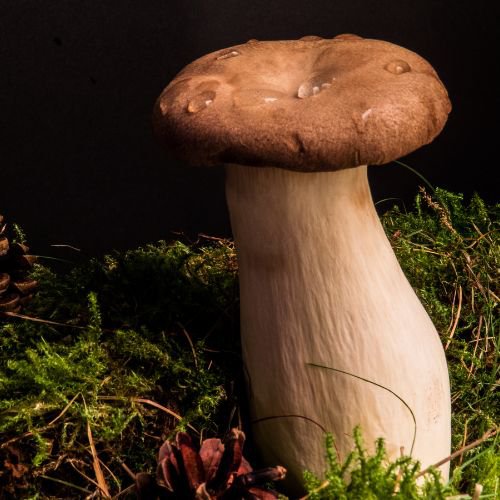
King trumpet mushrooms, also known as king oyster mushrooms, are known for their thick, meaty stems and small caps. These edible mushrooms have a mild, sweet flavor and a firm, chewy texture.
They have large, thick stems with small brown caps. The stems are solid and can grow quite long. They are often found in clusters.
In culinary uses, king trumpet mushrooms can be sliced and grilled as a side dish or main course. They can be sautéed and used in stir-fries and pasta dishes. King trumpet mushrooms are also excellent for a rich, umami flavor when roasted or braised.
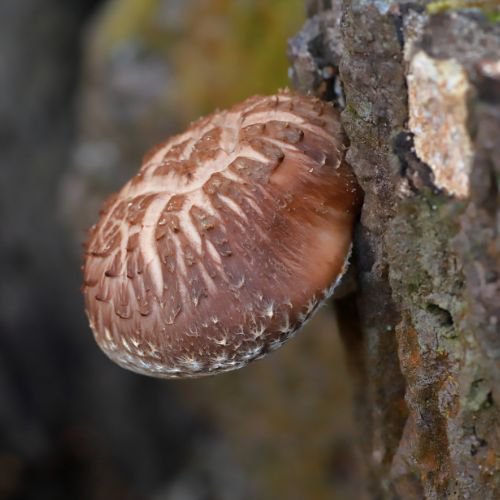
Shiitake mushrooms are prized for their rich, savory flavor and meaty texture. They are commonly used in Asian cuisine and are typically cultivated on hardwood logs or sawdust.
These mushrooms have dark brown to black caps. The caps are slightly convex and have a rough texture. The gills are white to light brown and are densely packed.
Shiitake mushrooms can be stir-fried with vegetables and soy sauce, added to soups and broths for extra depth of flavor, or grilled or roasted. Studies also suggest that consuming shiitake mushrooms can boost gut immunity [3,4].
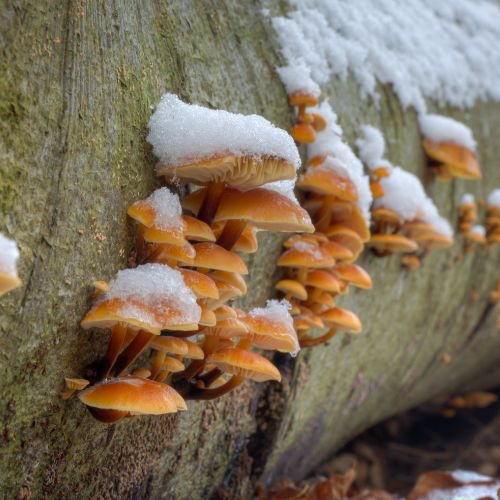
Enoki mushrooms are known for their long, thin stems and small white caps. They have a mild, slightly fruity flavor and a crunchy texture. Enoki mushrooms are commonly used in Japanese cuisine and grow in clusters on tree trunks.
These mushrooms have clusters of long, thin white stems with small, button-like caps. The stems are tender, and the caps are slightly convex.
Enoki mushrooms can be added to soups and hot pots, garnished for salads and sushi, and lightly sautéed and added to noodle dishes.
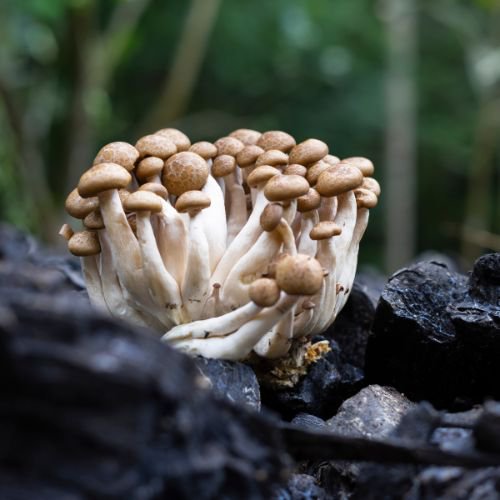
Beech mushrooms, or shimeji, come in brown and white varieties. They have a firm, slightly crunchy texture, and a nutty flavor. They are commonly found growing in clusters on beech trees.
These mushrooms have slender stems and convex caps. The caps can be brown or white and have a smooth texture. The stems are white and sturdy.
In culinary uses, beech mushrooms can be stir-fried with vegetables and meat. They can be added to soups and stews for extra texture and flavor. Beech mushrooms are also excellent when roasted or grilled as a side dish.
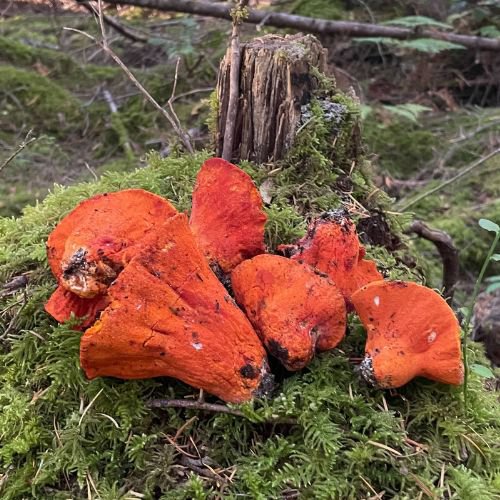
Lobster mushrooms are unique fungi that get their name from their bright orange-red color and seafood-like flavor. They are parasitized mushrooms, where the parasitic fungus Hypomyces lactifluorum infects certain species of mushrooms, transforming their appearance and taste.
To identify lobster mushrooms, look for a bright orange to red exterior with a rough, often warty texture. The flesh inside is white and dense. They have a distinct, seafood-like aroma.
Lobster mushrooms are outstanding and eye-catching culinary mushrooms. They can be sautéed with butter and garlic, and they enhance the flavor of seafood dishes. They are also delicious when added to chowders and bisques.
Did You Know? When you spot a wild mushroom, there is not always a guarantee that it will be an edible mushroom that is safe for consumption. Poisonous mushrooms can appear similar to edible mushrooms, so you need to know how to properly identify mushrooms before picking them in the wild.

Hedgehog mushrooms, also known as sweet tooth or wood hedgehog, are known for their spiny or tooth-like structures under the cap instead of gills. They have a nutty, slightly sweet flavor and a firm texture. They are typically found in forests during the late summer and fall.
These mushrooms have a beige to light brown cap with spines or teeth underneath instead of gills. The cap is usually convex with a wavy edge. They often grow in clusters on the forest floor.
Hedgehog mushrooms can be sautéed with onions and herbs. They can be added to risotto and pasta dishes. Hedgehog mushrooms are also excellent when used in creamy soups and sauces.
Now that you're equipped with the knowledge of various edible mushrooms, it's time to put it into practice. Explore farmers' markets, or even start growing your own mushrooms at home.
If you want to incorporate the health benefits of mushrooms into your cooking in an easy, daily way, consider using mushroom extracts. At Real Mushrooms, we offer 100% organic mushroom supplements in capsule or powder form.
We source our mushroom extracts from cultivated mushrooms (fruiting bodies), ensuring they contain no grains or fillers, providing you with the full benefits of each functional mushroom.
Browse our mushroom supplements today!

 .
.Disclaimer: The information or products mentioned in this article are provided as information resources only, and are not to be used or relied on to diagnose, treat, cure, or prevent any disease. This information does not create any patient-doctor relationship, and should not be used as a substitute for professional diagnosis and treatment. The information is intended for health care professionals only. The statements made in this article have not been evaluated by the Food and Drug Administration. Any products mentioned are not intended to diagnose, treat, cure, or prevent any disease. The information in this article is intended for educational purposes. The information is not intended to replace medical advice offered by licensed medical physicians. Please consult your doctor or health practitioner for any medical advice.